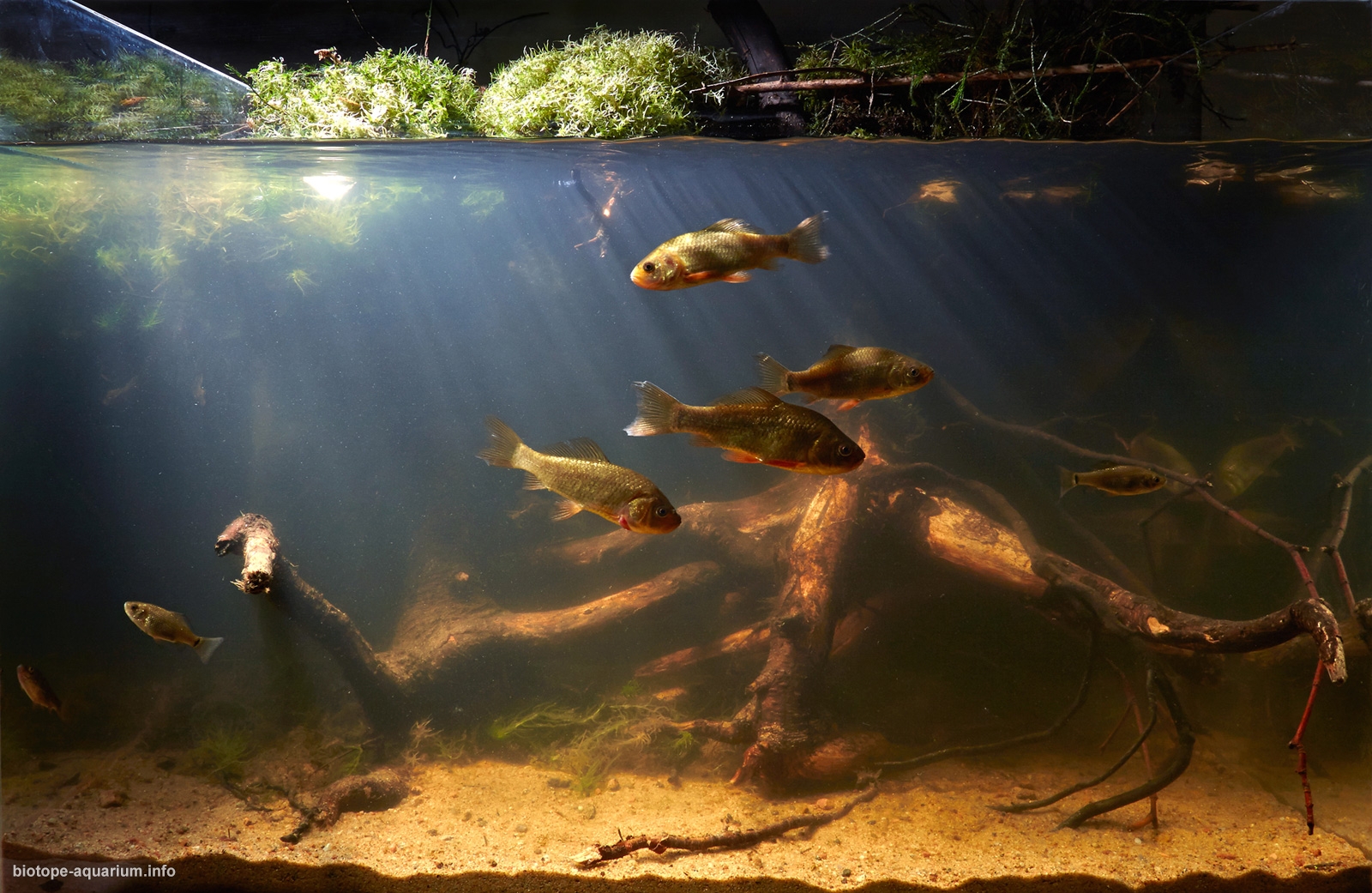Small forest lake in the Leningrad region near the village of Vartemägi, Russia
56th place in Biotope Aquarium Design Contest 2017
![]() Russia. Varvara Kozmenko
Russia. Varvara Kozmenko

Volume: 204 L
Dimensions: 73x56x50 cm
List of fishes: Carassius carassius
List of plants: Sphagnum, Polytrichum juniperinum
Description of decorations: Driftwood, moss, sand, birch leaves
Description of equipment: N/A
Water parameters: pH 6.5, KH 4, GH 6
Description of the area surrounding the biotope: This aquarium was set up based on a small forest lake in the depths of the mixed forest of the Leningrad Region, not far from the village of Vartemägi. The pond with dark peat water is surrounded from all sides by trees (spruce, pine, birch) and, basically, is shaded. At some distance from the reservoir the Ohta river flows with dark water and sandy-rocky bottom.
Description of the underwater landscape of the biotope: On the bottom of the pond there is yellowish sand, partially silted and covered with leaves and fragments of moss. There are a lot of snags in the lake, its banks steeply drop down and the roots of the coastal trees protrude from them. The green moss Sphagnum descends into the water. The dark water of the lake is rather transparent, weakly acidic (pH 6) and soft (KH 3). (In the aquarium the parameters are pH 6.5, KH 4, GH 6). Water plants are absent, as well as algae. On the surface of the lake among the floating leaves of birches water striders run, an abundance of mosquitoes suggests that their larvae also exist in this pond.
Description of the parameters of the habitat: The dark water of the lake is rather transparent, weakly acidic (pH 6) and soft (KH 3). Higher aquatic plants are absent, as well as algae.
List of fishes: Carassius carassius, Carassius gibelo.
List of plants: Sphagnum, Polytrichum juniperinum, Vaccinium myrtillus
Threats to the ecology: Carassius carassius were chosen for this aquarium not by chance. This species, once very numerous and remarkable for its stamina and unpretentiousness, is now being pushed out of our waters and in some places they are almost extinct. A clear tendency to replace Carassius carassius with Carassius auratus is clearly observed in the last 50 years. Carassius carassius is an aboriginal species of Europe, which K. Linnaeus called the common crucian carp (Carassius carassius L). A silver crucian carp (Carassius auratus) was considered a relatively recent settler from East Asia. Scientists argue that the cause of the gradual replacement of Carassius carassius could be its hybridization with Carassius auratus, during which the increasing number of Carassius auratus due to sterile hybrids simply “absorbs” the more rare Carassius carassius. The diet of the crucian carp is very extensive. Carassius carassius feeds mainly on benthic invertebrates: larvae of lake flies (blood worms), larvae of mayflies, small mollusks, while silver crucian carp also eats plankton. This occurs most often when there is no more protein-rich food in the body of water for some reason or there is, but in a very limited amount. In such conditions, the gold crucian fasts, and the silver crucian turns to plankton nutrition and gains mass. Therefore, where the silver carp started to reproduce successfully, the golden is gradually being desappering. But the greatest harm to the golden crucian carp population was caused by a Chinese sleeper, eating crucian carp. As a result, the number of crucian carp decreased, and in many small reservoirs it disappeared altogether, displaced by the Chinese sleeper.
Sources of information: http://www.sibrybalka.ru/ryby/takvotkakoiserebkaras/; http://club-fish.ru/bayki-i-rasskazy/letom-na-lyzhah-za-karasyami.html; https://www.e-reading.mobi/bookreader.php/1001926/Sabaneev_Leonid_-_Zhizn_i_lovlya_presnovodnyh_ryb.html
